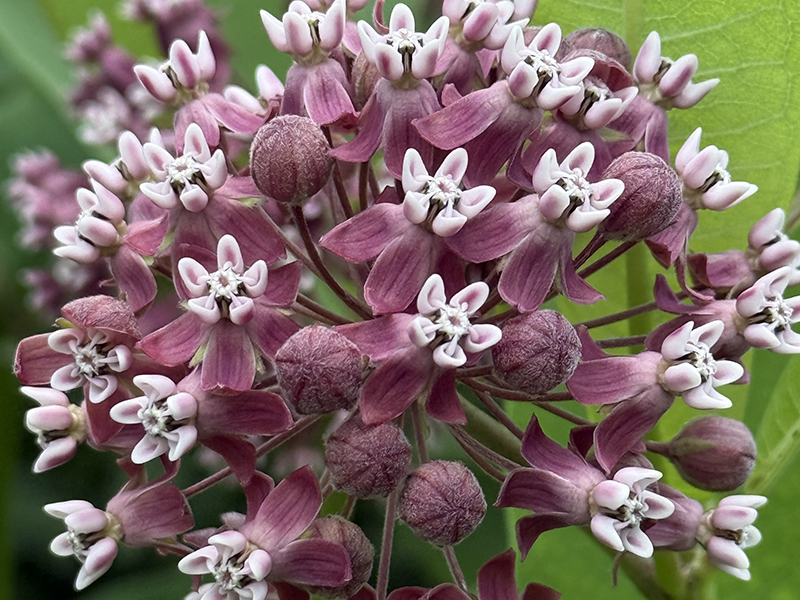
July 02, 2025| Education, Environment
By: Laurie Kane
Pollinators are essential for a healthy ecosystem and attracting them is one of the many benefits of choosing native plants. Common Milkweed (Asclepias syriaca), well known as the only host plant for monarch butterflies, is one of the vital pollinator plants currently blooming in our native gardens.
.jpg) |
.jpg) |
This hardy perennial produces rounded clusters of small, sweetly scented pinkish-purple flowers from June to August. The nectar is an important food source for native bees, bumblebees, honeybees, monarchs, and other butterflies. Flowers are followed by large, bumpy seed pods that split open in fall to release 50 to 100 seeds, which can be easily collected and shared to propagate more plants. Milkweed leaves and stems exude a milky white sap when broken.
Historically, the plant was used in natural remedies, including removing warts with a topical treatment made from the sap and chewing the roots to treat dysentery and pulmonary issues. During World War II, the seeds and floss were used to stuff life vests. Milkweed is still used by some Indigenous groups to make rope and is even commercially used today as a sustainable alternative to down and synthetics for stuffing pillows and comforters.
Common Milkweed grows three to four feet tall and thrives in full sun, but will tolerate partial shade. It’s an ideal choice for wildlife gardens, meadows, and other naturalized areas, as it grows easily from seeds and spreads quickly via underground stems called rhizomes. Spreading can be controlled by removing unopened seed pods and cutting the plants back in late autumn. Milkweed contains cardiac glycosides which, when ingested by monarch butterfly larvae feeding on the leaves, make the larvae and adult butterflies toxic to birds and other predators.
The monarch butterfly population in North America has declined drastically in recent decades due to habitat loss. Land development, climate change, commercial agriculture, overuse of herbicides and insecticides, and even conventional gardening have all contributed to the reduction of milkweed in the monarch’s breeding areas. Monarchs, a symbol of transformation, resilience, and hope in many cultures, are unique in their long-distance, multi-generational, two-way migration pattern. Monarchs bred east of the Rocky Mountains travel up to an incredible 3,000 miles to overwinter in central Mexico, while those in the west migrate to coastal California. You can help these unique insects by planting Common Milkweed, the only source of food for monarch caterpillars, in your own garden.
We invite you to visit our native plant gardens at 125 Landing Road, Landing, NJ, to see Common Milkweed and many more buzzworthy blooms. We hope you’ll be inspired to choose native plants for your own yard or garden, supporting local wildlife and contributing to a healthier environment.
The Xerces Society works with farmers, ranchers, park and natural area managers, and gardeners to plant milkweed and nectar plants needed for monarch survival. To learn more about monarchs and what you can do to help protect these and other important pollinators, visit the Xerces Society at xerces.org.